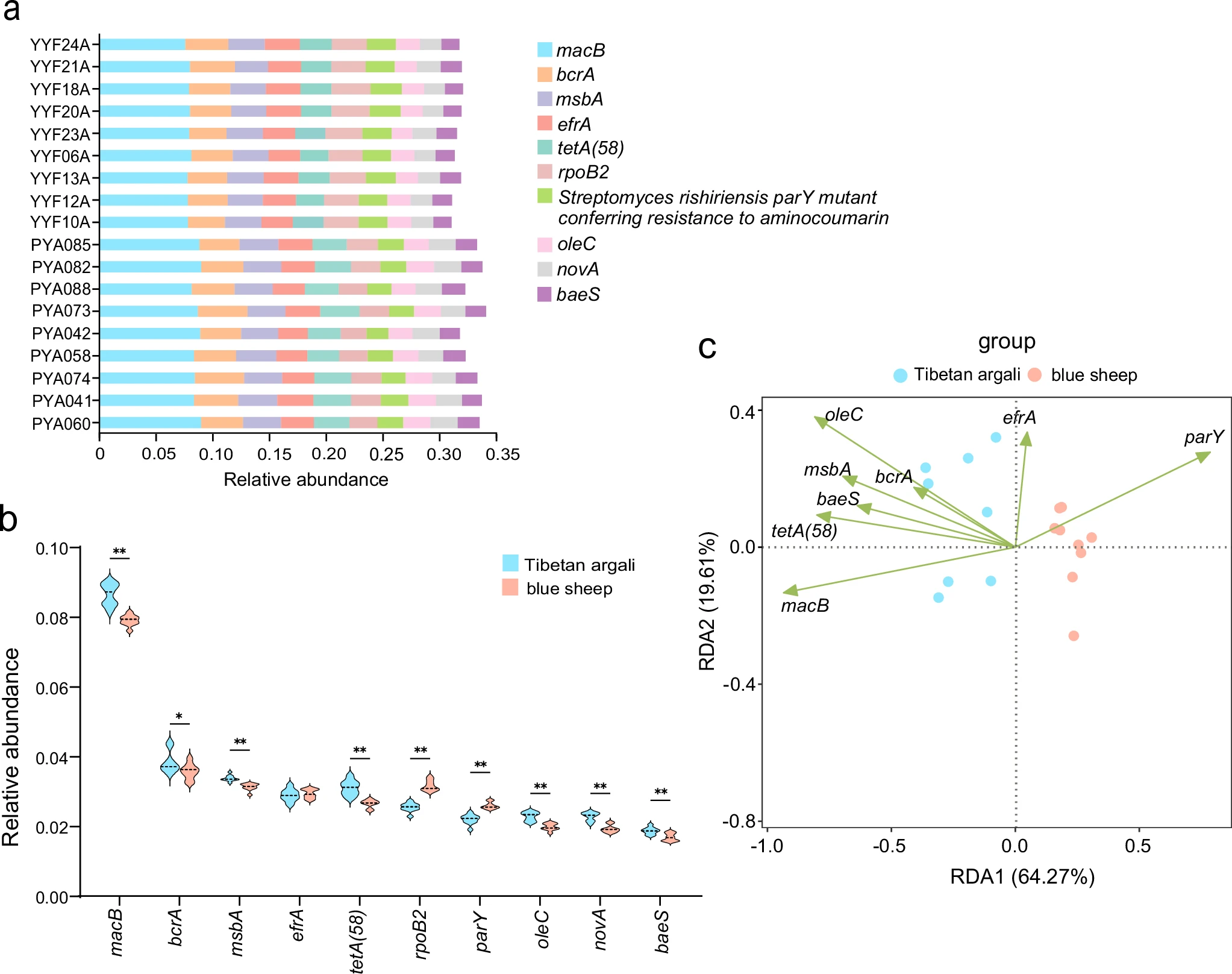The gut microbiota plays a critical role in plant digestion, nutrient absorption, and ecological adaptation in herbivores. However, how gut microbiota and diet jointly influence ecological niche differentiation in sympatric species remains unclear. Here, we use metagenomic sequencing and plant trnL (UAA) fragment sequencing to examine the gut microbiota and dietary composition of sympatric Tibetan argali (Ovis ammon hodgsoni) and blue sheep (Pseudois nayaur) in the Kunlun Mountains of the Qinghai-Tibet Plateau. Despite inhabiting similar environments, the two species harbor distinct microbial compositions and functional profiles. Interestingly, higher dietary diversity does not correspond to higher microbial diversity. Tibetan argali, despite having a simpler diet, possesses a more diverse and flexible gut microbiome. In contrast, blue sheep show broader dietary preferences and stronger microbial metabolic adaptation to glycan biosynthesis and metabolism. These findings reveal significant associations between gut microbiota composition, function, and diet, supporting a microbial contribution to trophic niche differentiation. Our results highlight distinct microbial-dietary strategies in sympatric herbivores and underscore the role of the gut microbiome in ecological adaptation and species coexistence.

Fig. 4: Distribution and differences in antibiotic resistance genes among groups.
The link below will guide you to the reading:
https://doi.org/10.1038/s42003-025-08185-7
